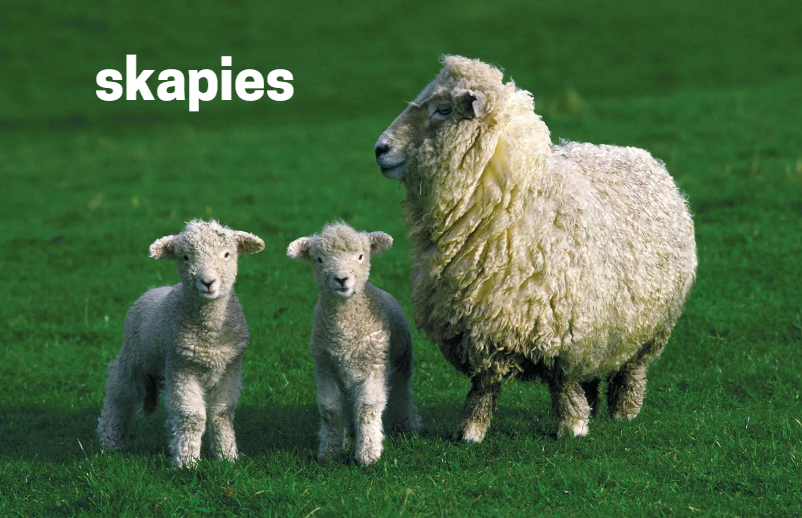Skapies: A Comprehensive Guide to Sheep Art and Its Cultural Significance
Contents
Introduction to Skapies
Skapies, a term derived from the Afrikaans word for “sheep,” encompasses a wide range of artistic expressions and cultural significances centered around sheep. From paintings and sculptures to crafts and folklore, skapies hold a special place in various cultures, symbolizing everything from innocence and pastoral life to abundance and sacrifice.
This article delves deep into the world of skapies, exploring its artistic manifestations, cultural roots, and the contemporary relevance of sheep art.
The Cultural Significance of Skapies
Historical Background
Sheep have been domesticated for thousands of years, serving as vital sources of wool, meat, and milk. Their depiction in art can be traced back to ancient civilizations, where they were often associated with deities, agriculture, and prosperity. In ancient Mesopotamia, for instance, sheep were linked to the goddess Inanna, symbolizing fertility and abundance.
Symbolism in Various Cultures
Christianity
In Christian iconography, sheep often represent the faithful, with Jesus depicted as the Good Shepherd. This symbolism is prevalent in various forms of religious art, from stained glass windows to Renaissance paintings.
Ancient Greece and Rome
In Greek and Roman mythology, sheep were associated with gods and goddesses of agriculture and harvest. They also appeared in various myths, such as the Golden Fleece sought by Jason and the Argonauts.
African Cultures
In many African cultures, sheep are symbols of wealth and status. They are often depicted in traditional art forms, including masks and sculptures, highlighting their importance in social and economic life.
Skapies in Modern Art
Wilma Scheepers and the Revival of Sheep Art
Wilma Scheepers has significantly contributed to the revival of sheep art, curating a collection that celebrates these gentle creatures. Her board “Skapies” showcases a diverse range of sheep-themed artworks, reflecting both traditional and contemporary aesthetics.
Trends in Sheep Art
Realism
Realistic portrayals of sheep in paintings and sculptures capture their physical beauty and serene presence. Artists like Wilma Scheepers emphasize the texture of wool and the gentle expression of sheep, creating lifelike representations.
Abstract and Contemporary
Contemporary artists experiment with abstract forms and vibrant colors to represent sheep. These artworks often carry deeper meanings, exploring themes of identity, community, and nature.
Folk Art
Folk art continues to celebrate sheep through crafts, textiles, and decorative items. This form of skapies often incorporates traditional techniques and motifs, preserving cultural heritage.
The Role of Skapies in Crafts and Decor
Handmade Crafts
Sheep-themed crafts, such as knitted toys, felted figures, and embroidered textiles, are popular among artisans. These handmade items not only celebrate sheep but also promote sustainable and ethical practices in the craft industry.
Home Decor
Skapies-inspired decor items, including wall art, cushions, and ceramics, add a touch of pastoral charm to homes. These pieces often evoke a sense of nostalgia and simplicity, reminding us of the peaceful countryside.
The Economic Impact of Skapies
Art Market
Sheep art has a significant presence in the art market, with both original artworks and prints being highly sought after. Collectors and enthusiasts appreciate skapies for their aesthetic appeal and cultural resonance.
Tourism
Regions known for sheep farming, such as New Zealand and Scotland, attract tourists interested in sheep-related activities and art. Museums, galleries, and festivals dedicated to sheep further boost local economies.
Skapies in Literature and Media
Literature
Sheep frequently appear in literature, symbolizing innocence, sacrifice, and pastoral life. Classic works like “Charlotte’s Web” and “The Little Prince” feature sheep as central characters, highlighting their symbolic importance.
Film and Television
In film and television, sheep often represent simplicity and rural life. Documentaries and series about sheep farming, such as “Shaun the Sheep,” have popularized these animals, making them beloved figures in popular culture.
Environmental and Ethical Considerations
Sustainable Farming
Sustainable sheep farming practices are essential for the environment and the welfare of the animals. Ethical considerations include humane treatment, responsible land management, and minimizing environmental impact.
Conservation Efforts
Conservation efforts focus on preserving sheep breeds and their habitats. Organizations and initiatives work to protect endangered breeds and promote biodiversity within the farming industry.
Future Trends in Skapies
Technological Integration
Advances in technology, such as digital art and virtual reality, are opening new avenues for skapies. Artists can now create interactive and immersive experiences that bring sheep art to life in novel ways.
Global Influence
As the world becomes more interconnected, skapies are gaining global recognition. Cross-cultural collaborations and exhibitions are spreading the appreciation of sheep art beyond its traditional boundaries.
FAQs
What are Skapies?
Skapies is an artistic term derived from the Afrikaans word for “sheep,” encompassing various forms of sheep art and cultural representations.
Who is Wilma Scheepers?
Wilma Scheepers is an artist and curator known for her collection “Skapies,” which showcases a diverse range of sheep-themed artworks.
Why are sheep significant in art?
Sheep hold symbolic meanings in various cultures, representing innocence, pastoral life, abundance, and sacrifice. Their depiction in art reflects these cultural values and beliefs.
How can I incorporate Skapies into my home decor?
You can incorporate skapies into your home decor through sheep-themed wall art, cushions, ceramics, and handmade crafts that add a touch of pastoral charm to your living space.
What are the environmental considerations of sheep farming?
Sustainable sheep farming practices focus on humane treatment, responsible land management, and minimizing environmental impact to ensure the welfare of the animals and the environment.
How is technology influencing Skapies?
Technology is enabling new forms of skapies through digital art, virtual reality, and interactive experiences, expanding the ways in which sheep art can be created and appreciated.
Conclusion
Skapies, or sheep art, is a rich and diverse field that spans cultures, histories, and artistic styles. From ancient symbolism to contemporary interpretations, sheep have captivated artists and audiences alike.
The cultural significance, economic impact, and future potential of skapies make it a fascinating subject for art enthusiasts and collectors. Embracing skapies not only enriches our artistic landscape but also fosters a deeper appreciation for these gentle and enduring creatures.

